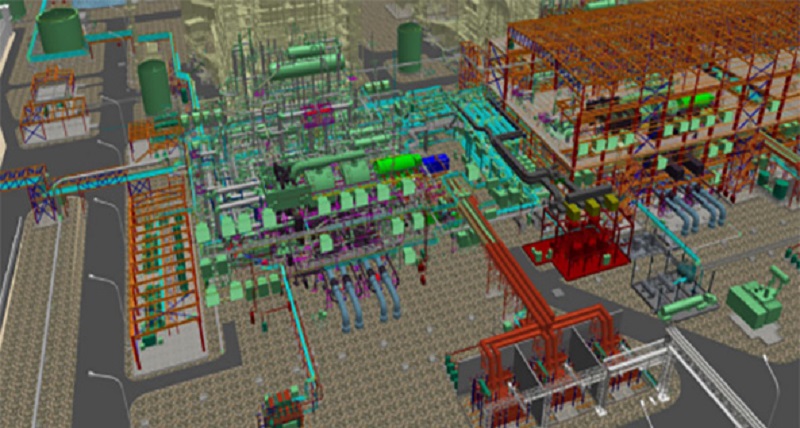
Asset Lifecycle Information Management (ALIM)
Asset Lifecycle Information Management (ALIM) serves as a strategic cornerstone for plant designers and owner operators seeking advanced decision support capabilities to optimize global design, production and plant lifecycle management.
Ready to get started?
$ProductName
$SustainabilityImpactLabel
$SustainabilityCTABandHeadingLabel
What is ALIM?
ALIM systematically and strategically manages data, information and documentation associated with assets throughout their lifecycle, spanning all stages including creation, utilisation, maintenance and decommissioning. This holistic approach provides organisations a comprehensive asset view, facilitating more informed decision-making, operational efficiency improvements and cost-effective asset management.
Asset lifecycle information management involves processes and systems used to capture, store, organise and leverage information pertinent to the complete lifespan of assets within an organisation. Components typically include:
-
Data Capture: Manual and/or automated data collection from various sources (e.g., purchase orders, maintenance records, inspection reports), enabling more informed decision-making and comprehensive asset management to improve insights, optimise operations and enhance overall efficiency and cost-effectiveness.
-
Data Storage: Efficient storage of asset-related data is stored using databases, cloud-based solutions and/or specialised software, providing swift and convenient access throughout the asset lifecycle.
-
Data Organisation: Efficiently organises and categorise asset data by type, location, maintenance history or custom criteria for seamless retrieval and analysis.
-
Asset Identification and Tracking: Assigning a unique identifier to each asset (e.g., barcodes, radio-frequency identification tags, serial numbers) to deliver precise location monitoring, status tracking and accurate historical records, optimising operational performance by streamlining asset management, reducing errors and facilitating more timely decision-making.
-
Maintenance Records: Maintaining detailed maintenance records (e.g., scheduled maintenance, repairs, replacements, associated costs)), enabling tracking of asset health and performance over time.
-
Compliance and Regulations: Ensuring assets adhere to industry regulations and safety standards to refine documentation of compliance efforts and inspection results.
-
Work Orders and Requests: Methodically recording and monitoring work orders and service requests pertaining to assets aids in prioritising maintenance tasks, enabling optimal asset condition and prompt service responses.
-
Cost Management: Effectively managing asset costs (i.e., purchase, maintenance expenses depreciation, disposal) elevates financial efficiency and sustainability throughout their lifecycles.
-
Analytics and Reporting: Providing insights into performance, cost trends and improvement areas, analytics and reporting facilitate more informed decision-making, optimise asset management and enhance overall operational efficiency.
-
Integration with Other Systems: Seamless integration of ALIM systems with other business-critical systems (e.g., enterprise resource planning software), provides effortless data sharing and comprehensive, unified information flow across organisational platforms.
-
Asset Retirement and Disposal: Managing the end-of-life process for assets, including decisions about disposal, recycling or decommissioning, necessitates proper documentation essential for compliance and environmental responsibility.
-
Security and Access Control: Ensuring data integrity and preventing risks (like data breaches) requires protecting asset data from unauthorised access and implementing encryption measures, providing overall asset security.
-
Mobile Accessibility: Delivering field technicians and employees accurate, real-time data via mobile devices where and when they need it so stakeholders can make more informed decisions and manage assets on the go.
-
Scalability and Flexibility: Delivered by an ALIM system designed to effortlessly expand to meet growing demands and adapt to evolving business requirements and technological advancements.
-
Training and User Support: Assuring all stakeholders receive the essential knowledge and assistance to proficiently leverage the asset management system, fostering competence and successful implementation.
What is Asset Lifecycle?
The Benefits of Asset Lifecycle Information Management
ALIM’s overarching benefits are maximising the value, efficiency and effectiveness of an organisation's assets throughout their complete lifecycles. It also streamlines compliance with regulatory requirements and industry standards, reduces risks associated with asset failures and supports sustainability and environmental goals.
Other organizational benefits from ALIM include:
-
Improved Decision-making: Access to comprehensive asset data, enabling more informed decisions throughout the asset's lifecycle.
-
Enhanced Efficiency: Improved asset management reduces downtime, extends asset lifespans and optimises resource allocation.
-
Cost Savings: Proactive maintenance and optimised operations lead to reduced operational costs and extended asset lifespans.
-
Regulatory Compliance: Assists organisations with meeting regulatory requirements and industry standards.
-
Risk Mitigation: Identifies potential issues early, minimising associated risks.
-
Data Accessibility: Centralised data management ensures critical asset information is readily available to relevant stakeholders.
-
Sustainability: Supports sustainable practices by optimising resource usage and minimising waste.

Asset Lifecycle Information Management Solutions
Hexagon provides advanced ALIM solutions tailored to streamline asset management. HxGN SDx® stands out for plant designers and owner operators, providing comprehensive capabilities and the tools to optimise assets – ushering in a new era in plant asset management.
Unlock your organisation's asset potential and achieve operational excellence across lifecycles. Begin today by exploring HxGN SDx.
-
 Product
ProductHxGN SDx® is designed for digital transformation by addressing this challenge in practical, cost-effective ways.
-
×Human-Assisted autonomyEfficiently manage change through automated work processes and easily identify impact and potential conflicts of a change
-








